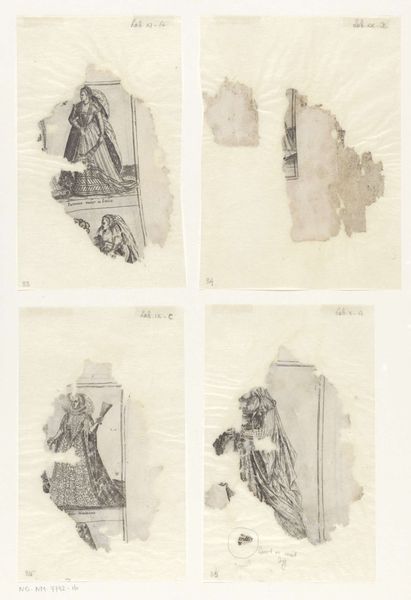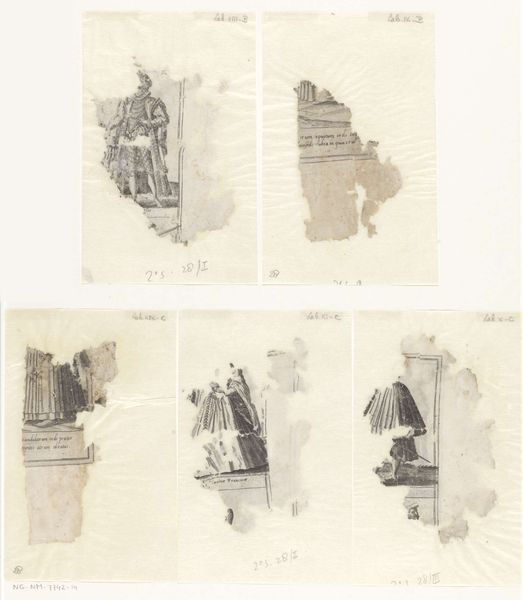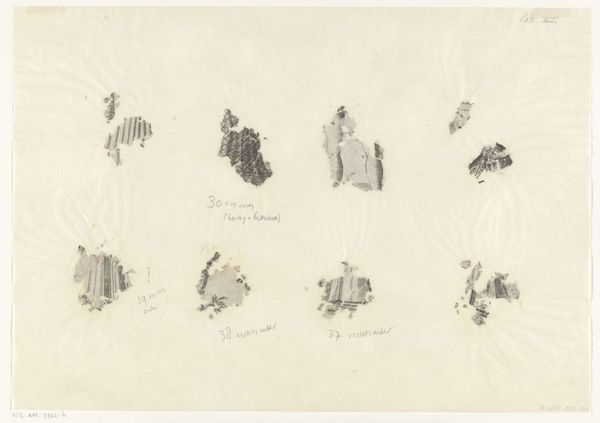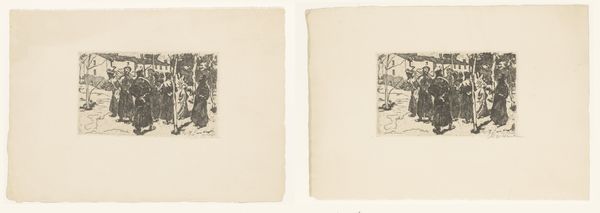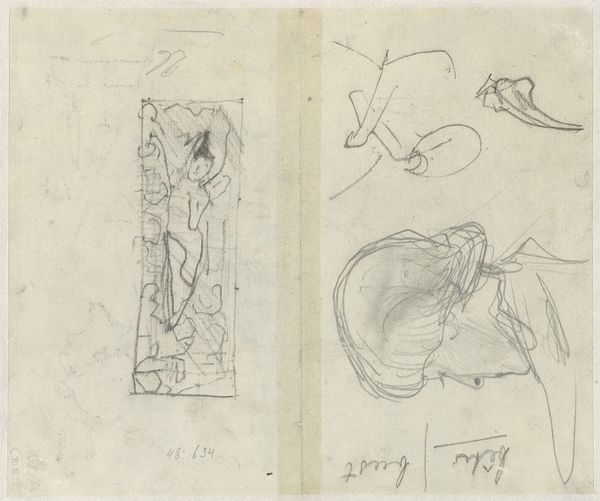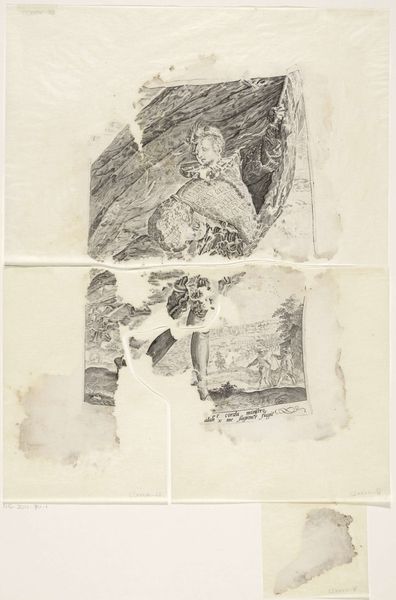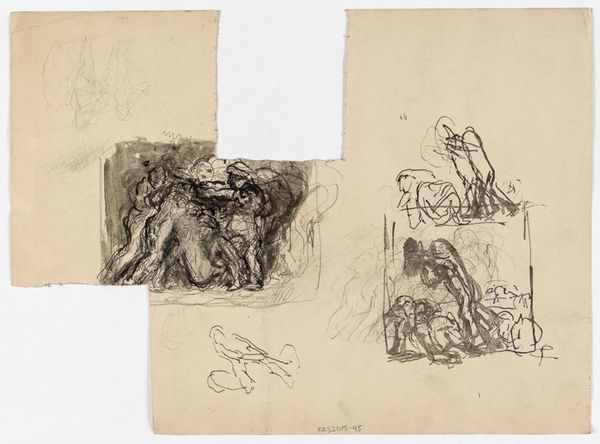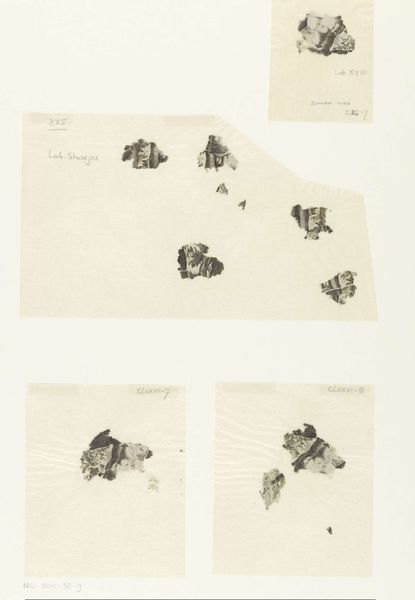
Fragmenten van prenten met wereldlijke en geestelijke klederdrachten 1581 - 1596
0:00
0:00
abrahamdebruyn
Rijksmuseum
drawing, paper, ink
#
portrait
#
drawing
#
figuration
#
paper
#
11_renaissance
#
ink
#
northern-renaissance
Dimensions: height 166 mm, width 112 mm
Copyright: Rijks Museum: Open Domain
These are fragments of prints depicting secular and clerical garments, created by Abraham de Bruyn in the late 16th century. During this period, the detailed depiction of clothing served not just as a record of fashion, but also as a marker of social status and identity in a rapidly changing European society. De Bruyn, working in a time of religious conflict and social stratification, captures the nuances of dress that signaled allegiance and position. These fragments offer a glimpse into the visual culture that enforced and negotiated social hierarchies. Each piece of fabric, each fold and cut, tells a story of power, piety, or profession. Consider how clothing in this era dictated one's visibility and legitimacy within society. De Bruyn’s work invites us to reflect on how we continue to use fashion to define and express our identities today.
Comments
No comments
Be the first to comment and join the conversation on the ultimate creative platform.
